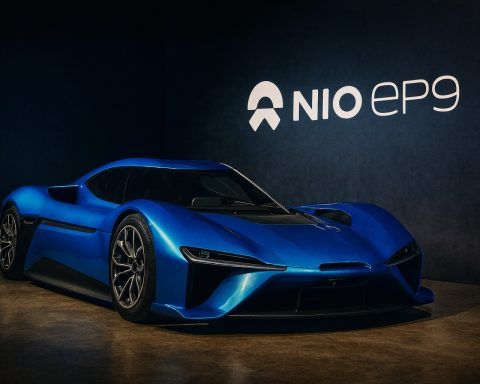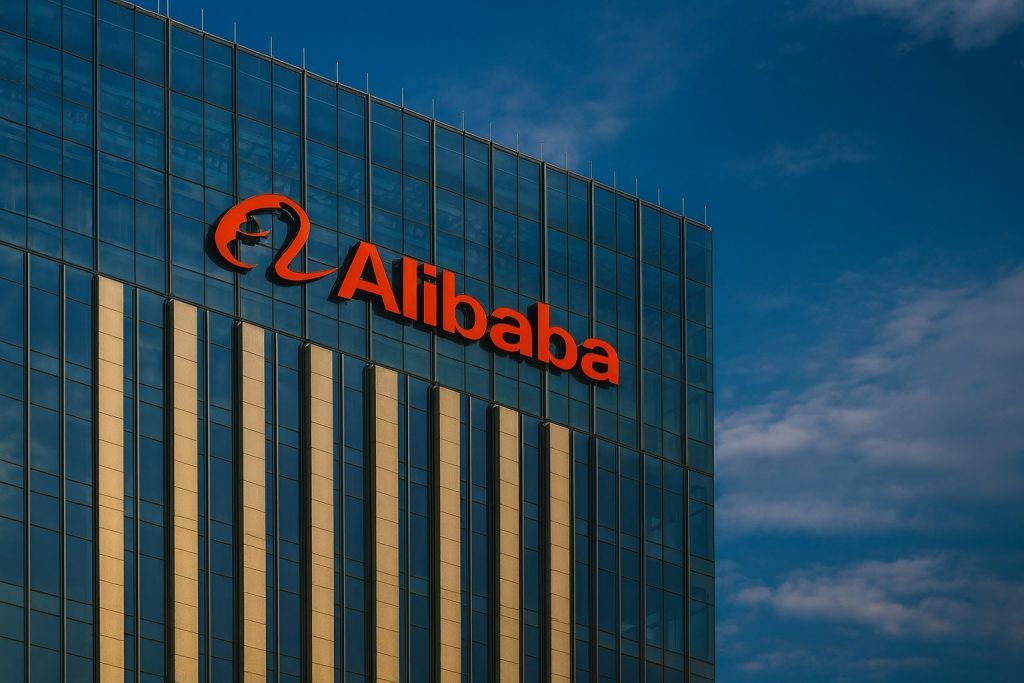Cidara Therapeutics, Inc. (NASDAQ: CDTX) is at the center of Wall Street’s attention today after Merck & Co., Inc. (NYSE: MRK) agreed to acquire the San Diego–based biotech in a cash deal valued at approximately $9.2 billion, sending CDTX shares more than 100% higher in a single session. [1]
Below is a detailed look at today’s news (14 November 2025), the science behind Cidara’s lead flu-prevention asset CD388, the stock market reaction, and the wave of shareholder-law-firm investigations that emerged within hours of the announcement.
Merck to Acquire Cidara for $221.50 Per Share in Cash
Merck and Cidara announced this morning that they have entered into a definitive merger agreement under which Merck, through a subsidiary, will acquire all outstanding shares of Cidara for $221.50 per share in cash, implying a transaction value of about $9.2 billion. [2]
According to the joint press release:
- The offer price represents a premium of roughly 109% to Cidara’s last closing price. [3]
- The deal structure is an all‑cash tender offer, followed by a back‑end merger in which any remaining shares will be converted into the same cash consideration. [4]
- The transaction has already been unanimously approved by the boards of directors of both Merck and Cidara. [5]
- Completion is expected in the first quarter of 2026, subject to customary closing conditions, including antitrust clearance under the Hart‑Scott‑Rodino Act and a majority of Cidara shares being tendered into the offer. [6]
The deal will be accounted for as an asset acquisition, reflecting Merck’s focus on CD388, Cidara’s lead long‑acting antiviral candidate for influenza prevention. [7]
Strategic Rationale: A Big Bet on “Universal” Flu Prevention
At the core of the transaction is CD388, a novel drug‑Fc conjugate (DFC) that Merck and Cidara describe as a strain‑agnostic, long‑acting antiviral designed to prevent influenza A and B in people at high risk of complications. [8]
Key scientific and clinical points:
- Mechanism: CD388 links multiple copies of a potent neuraminidase inhibitor (chemically related to zanamivir, the active ingredient in GSK’s Relenza) to a proprietary human antibody fragment (Fc). This DFC design is not a vaccine and not a conventional monoclonal antibody; rather, it functions as a long‑acting small‑molecule inhibitor with an extended half‑life. [9]
- Target population: The drug is intended for individuals at increased risk from influenza – including older adults, immunocompromised patients, and people with chronic conditions – and aims to provide once‑per‑season protection regardless of immune status. [10]
- Phase 2b NAVIGATE data: In a mid‑stage trial in healthy, unvaccinated adults aged 18–64, a single dose of CD388 reduced symptomatic, laboratory‑confirmed influenza by up to 76% over 24 weeks compared with placebo, meeting all primary and secondary endpoints. [11]
- Regulatory designations: The U.S. FDA has granted CD388 both Fast Track and Breakthrough Therapy designations, recognizing its potential to significantly improve prevention options for serious flu. [12]
CD388 is now in the Phase 3 ANCHOR trial, a randomized, double‑blind, placebo‑controlled study targeting 6,000 participants across the United States and United Kingdom. Enrollment began in September 2025 at roughly 150 Northern Hemisphere sites, and Cidara expects to hit its enrollment target by December 2025 with an interim analysis planned for the first quarter of 2026. [13]
For Merck, which faces upcoming patent expirations for its blockbuster cancer drug Keytruda later this decade, CD388 represents a late‑stage, differentiated asset in respiratory disease and infectious disease that could provide durable revenue into the 2030s. [14]
CDTX Stock Reaction: Shares More Than Double on Record Volume
The market’s response on November 14 has been dramatic. Cidara shares surged more than 100% after the deal was announced:
- According to Nasdaq/RTT News coverage, CDTX was up about 105.7% to $217.99, a gain of $112 in a single session, putting today’s price near the deal consideration of $221.50 per share. [15]
- Reuters likewise reported that Cidara shares “doubled in value” to around $217.89, while Merck’s stock slipped roughly 1.3% as investors digested the large cash outlay. [16]
- Data from Quiver Quantitative show CDTX rising roughly 105% intraday with trading activity worth approximately $838 million, a huge spike in dollar volume and search interest on the platform. [17]
Before today’s auction, Wall Street was already broadly bullish on Cidara. QuiverQuant’s compilation of broker research notes that nine firms had issued positive ratings in recent months – including RBC Capital, Needham, Morgan Stanley, JPMorgan, HC Wainwright, and others – with a median 12‑month price target of about $158.50 per share. [18]
Merck’s offer at $221.50 therefore comes well above the consensus target range, and even above the highest published targets (which capped around $200), helping explain why the stock quickly traded near the deal price. [19]
Deal Terms and Timeline: Tender Offer, Support Agreements and Break Fees
More granular details emerged today through Cidara’s Form 8‑K filed with the U.S. Securities and Exchange Commission, which summarizes the merger agreement. [20]
Key structural features:
- Tender offer first, then merger: A Merck subsidiary will launch a tender offer for all outstanding Cidara shares at $221.50 in cash per share. After the offer closes (assuming a majority of shares are tendered), Merck will complete a short‑form merger to acquire any remaining shares at the same price. [21]
- Treatment of equity awards:
- All outstanding stock options will vest at closing; in‑the‑money options will be cashed out based on the difference between the deal price and their exercise price, while options with a strike price at or above $221.50 will be cancelled without consideration. [22]
- Restricted stock units (RSUs) will similarly be cancelled and converted into the right to receive cash equal to the number of underlying shares multiplied by the cash consideration. [23]
- Support agreements: Certain major shareholders have already signed tender and support agreements committing to tender their shares, vote against alternative transactions, and waive appraisal rights, signaling strong insider backing for the deal. [24]
- No‑shop with fiduciary out: Cidara agreed to customary no‑shop restrictions, limiting its ability to solicit competing bids, but its board may consider unsolicited “superior proposals” subject to Merck’s matching rights and payment of a termination fee. [25]
- Termination and reverse termination fees:
- If Cidara terminates in order to accept a superior bid, or if the board changes its recommendation, it may owe Merck a termination fee of approximately $300.6 million. [26]
- Conversely, if the deal fails for certain antitrust reasons or if Merck doesn’t secure required regulatory clearances by the long‑stop date, Merck could owe Cidara a reverse termination fee of about $462.4 million. [27]
Assuming regulatory review proceeds smoothly, both companies still guide to a Q1 2026 closing. [28]
Wave of Shareholder Investigations: Is the Price “Fair”?
Within hours of the announcement, multiple investor‑rights law firms disclosed investigations into the fairness of the transaction to Cidara shareholders – a common occurrence in large public‑company buyouts.
Notable developments today, 14 November 2025 include:
- Halper Sadeh LLC announced an investigation into whether Cidara’s board violated federal securities laws or breached its fiduciary duties by failing to obtain the best possible consideration and by potentially omitting material information about the Merck deal. [29]
- The Ademi Firm issued a “Shareholder Alert” stating it is investigating whether Cidara is obtaining a fair price for its public shareholders under the terms of the Merck transaction. [30]
- Brodsky & Smith LLC released a GlobeNewswire update listing Cidara among several companies under review, focusing on whether the board “failed to conduct a fair process” and whether the $221.50 per share consideration adequately reflects the company’s value. [31]
These investigations typically seek to determine whether:
- The board ran a competitive process or prematurely locked in an acquirer.
- There are potential higher bids from other strategic or financial buyers.
- The proxy or tender offer documents will fully disclose all material financial projections, conflicts of interest, and valuation analyses.
So far, there is no indication that any of these law‑firm reviews have derailed the transaction or produced an alternative bid, but they do add a layer of headline risk around the deal until the tender offer closes.
Cidara’s Standalone Position: Cash‑Rich but Burning Capital for CD388
Today’s takeover news comes on the heels of Cidara’s third‑quarter 2025 results and corporate update, released on November 6. The report painted the picture of a biotech heavily focused on accelerating CD388 while still generating sizable losses. [32]
Highlights from that earlier update:
- Balance sheet strength:
- Cash, cash equivalents, restricted cash and investments totaled $476.5 million as of 30 September 2025, up from $196.2 million at the end of 2024, thanks largely to equity financings and partnership milestones. [33]
- Net loss:
- Cidara reported a Q3 2025 net loss of $83.2 million, and a year‑to‑date loss of $132.4 million, reflecting aggressive R&D and in‑process R&D charges tied to CD388. [34]
- Janssen milestone:
- The company incurred $45 million in acquired in‑process R&D in Q3 related to a milestone owed to Janssen upon dosing the first five subjects in the ANCHOR Phase 3 study, following Cidara’s 2024 re‑acquisition of CD388 rights from Janssen. [35]
- BARDA support:
- The U.S. Biomedical Advanced Research and Development Authority (BARDA) awarded Cidara a contract valued at up to $339.2 million, with an initial $58.1 million base period to support U.S.‑based manufacturing and expanded clinical development of CD388. [36]
Cidara also disclosed that, based on FDA feedback, ANCHOR’s study population was expanded to include generally healthy adults over 65 years of age, roughly doubling the initial U.S. population potentially eligible for CD388 from about 50 million to well over 100 million people. [37]
Taken together, these data suggest Cidara was well funded to push CD388 through Phase 3 but also facing rising R&D intensity and execution risk – a backdrop that likely influenced Merck’s willingness to pay a substantial premium for control of the asset.
What the Deal Means for Merck
From Merck’s perspective, the Cidara acquisition fits neatly into a multi‑year M&A strategy to bulk up its late‑stage pipeline ahead of Keytruda’s loss of exclusivity.
Recent moves highlighted by Reuters include: [38]
- The $11.5 billion purchase of Acceleron to secure pulmonary arterial hypertension drug Winrevair.
- A roughly $10 billion acquisition of Verona Pharma earlier this year for newly approved COPD drug Ohtuvayre.
Merck CEO Robert Davis emphasized in today’s release that CD388 could be “another important driver of growth through the next decade,” while Merck Research Laboratories president Dr. Dean Li framed the deal as a way to expand the company’s respiratory and infectious disease portfolio at a time when seasonal and pandemic influenza remains a major global health threat. [39]
Analysts quoted by Reuters described Cidara as “essentially a single‑asset story” but one that offers late‑stage, relatively lower‑risk revenue potential compared to earlier‑stage experimental therapies, even if Merck will need to invest heavily in market education and access. [40]
For Merck shareholders, the key questions will include:
- Whether CD388 ultimately secures regulatory approval based on ANCHOR’s data.
- How large and durable the market for seasonal and pandemic flu prevention proves to be, especially in older and immunocompromised populations.
- How CD388 competes or coexists with existing vaccines and antivirals, and whether public health agencies and payers support broad adoption.
Risks and Next Catalysts to Watch
Even with the stock trading close to Merck’s offer price, several near‑term catalysts and risks remain for Cidara investors:
- Tender offer launch and documentation
- Merck’s Schedule TO and Cidara’s Schedule 14D‑9 recommendation statement, which will include full board and banker analyses, are expected to be filed with the SEC following the formal launch of the tender offer. These filings will be scrutinized closely by law firms and arbitrage investors. [41]
- Regulatory review
- The companies must secure clearance under U.S. antitrust regulations and possibly other jurisdictions. While analysts generally view antitrust risk here as modest given the concentration of the asset in flu prevention, regulatory delays could still affect deal timing and the merger‑arbitrage spread. [42]
- Potential competing bids
- Press coverage and investor commentary have referenced earlier reports of competitive interest in Cidara; Seeking Alpha notes that the Financial Times had previously reported another pharma group potentially in the mix. [43]
- The merger agreement permits Cidara to consider a superior unsolicited proposal, but any such bidder would have to top $221.50 cash plus cover a substantial termination fee.
- Ongoing shareholder investigations
- Halper Sadeh, Ademi, and Brodsky & Smith have all opened investigations focused on process and price. These actions rarely block deals outright, but they can result in additional disclosures or modest improvements in terms after negotiations. [44]
- Clinical milestones for CD388
- Beyond the transaction, investors will continue watching the ANCHOR Phase 3 trial, which is targeting full Northern Hemisphere enrollment by December 2025 and includes an interim analysis in Q1 2026 that could be highly informative for Merck’s long‑term view of the asset. [45]
Bottom Line: A Transformational Exit for Cidara
As of 14 November 2025, the story around Cidara Therapeutics has shifted almost overnight:
- From a high‑risk, late‑stage biotech burning cash to advance a single lead antiviral,
- To a company with a signed $9.2 billion all‑cash deal from one of the world’s largest pharmaceutical players,
- And a stock trading within a few dollars of that agreed takeout price after a historic one‑day gain of more than 100%. [46]
Whether the final chapter involves a smooth tender and merger, a sweetened offer, or the emergence of a competing bidder will depend on the coming weeks’ regulatory filings and boardroom dynamics. For now, the market is treating Merck’s $221.50‑per‑share bid as the new anchor for CDTX – and as a high‑profile endorsement of Cidara’s ambition to redefine influenza prevention.
This article is for informational and news‑reporting purposes only and does not constitute investment, legal, or tax advice. Investors should review the official SEC filings and consult their own advisers before making any investment decisions regarding Cidara Therapeutics, Inc. or Merck & Co., Inc.
References
1. www.reuters.com, 2. www.cidara.com, 3. www.reuters.com, 4. www.sec.gov, 5. www.cidara.com, 6. www.cidara.com, 7. www.cidara.com, 8. www.cidara.com, 9. www.reuters.com, 10. www.cidara.com, 11. www.reuters.com, 12. www.cidara.com, 13. www.cidara.com, 14. www.reuters.com, 15. www.nasdaq.com, 16. www.reuters.com, 17. www.quiverquant.com, 18. www.quiverquant.com, 19. www.quiverquant.com, 20. www.sec.gov, 21. www.sec.gov, 22. www.sec.gov, 23. www.sec.gov, 24. www.sec.gov, 25. www.sec.gov, 26. www.sec.gov, 27. www.sec.gov, 28. www.cidara.com, 29. www.businesswire.com, 30. www.prnewswire.com, 31. www.globenewswire.com, 32. www.cidara.com, 33. www.cidara.com, 34. www.cidara.com, 35. www.cidara.com, 36. www.cidara.com, 37. www.cidara.com, 38. www.reuters.com, 39. www.cidara.com, 40. www.reuters.com, 41. www.sec.gov, 42. www.reuters.com, 43. seekingalpha.com, 44. www.businesswire.com, 45. www.cidara.com, 46. www.nasdaq.com







